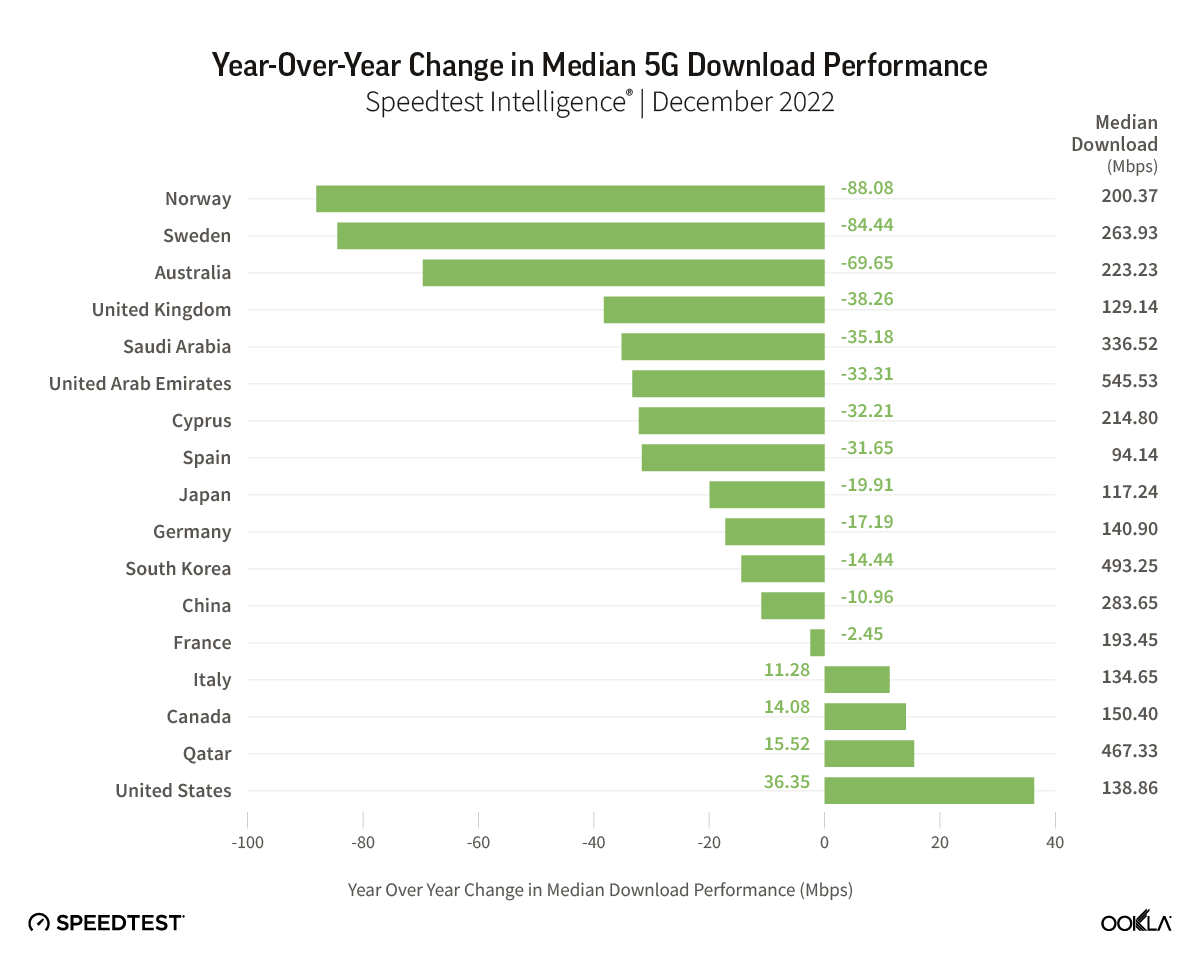4G has been widely adopted all around the world but not all countries have access to 5G yet, and even in countries that do have access, 5G networks may not be very fast as you think. Prior to the release of 5G, it was anticipated that the mobile connectivity will be so fast and the speed of 5G networks would increase over time. However, according to the report published by Ookla, the reality appears to be the opposite, with 5G networks actually slowing down.
5G networks all around the world
The growing demand for 5G-enabled devices is one of the primary causes of 5G network slowdowns, as each individual who replaces an old 4G supported phone with a new 5G enabled one becomes a part of the 5G network, causing congestion in the network due to a surge in users. It was similarly observed with the 4G network, where speeds initially rose but eventually slowed down as more individuals joined the network.
One of the best side of 5G networks is the ability to use new frequency bands, especially the mmWave band (24 GHz – 40 GHz), which can support lower latency and transfer data at faster rates. The mmWave 5G is also not widely used and is almost invisible outside of the US. Even in the US, companies like Verizon, which initially had high expectations for mmWave, have switched to newly created bands such as C-band (4 GHz – 8 Ghz). Giles points out that while 140 operators have mmWave licenses in 24 countries by 2022, just 28 operators have this technology deployed so far, demonstrating that only a small number of operators are interested in mmWave 5G.
It is noticeable that even some developed countries, including Norway and Sweden, have experienced considerable drops in 5G performance, while other countries such as Italy, Canada, Qatar, and the United States perform better compared to last year. Qatar’s improvement could be because of the investments for World Cup since it’s beneficial to add more base stations in crowded areas like stadiums.


 Kadir Can Akıncı
Kadir Can Akıncı


